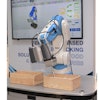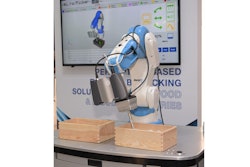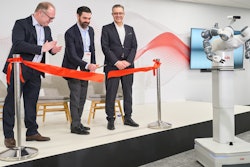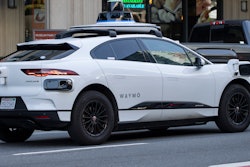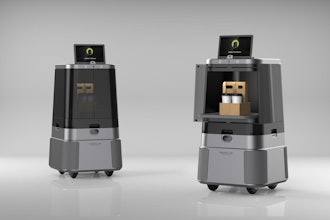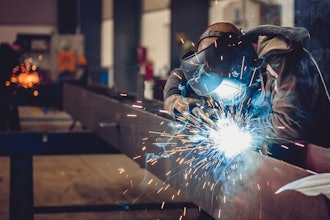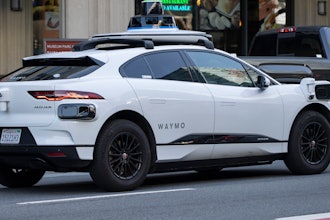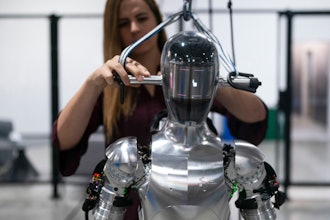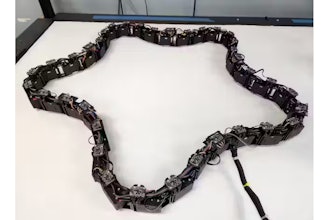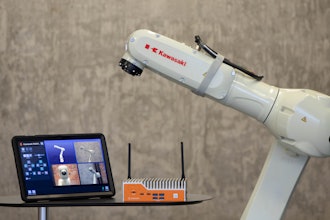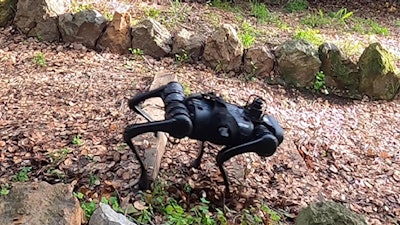
Researchers with DARPA’s Machine Common Sense (MCS) program recently demonstrated a series of improvements to robotic system performance over the course of multiple experiments. Just as infants must learn from experience, MCS seeks to construct computational models that mimic the core domains of child cognition for objects (intuitive physics), agents (intentional actors), and places (spatial navigation).
Using only simulated training, recent MCS experiments demonstrated advancements in systems’ abilities – ranging from understanding how to grasp objects and adapting to obstacles, to changing speed/gait for various goals.
“These experiments are important milestones that get us closer to building and fielding robust robotic systems with generalized movement capabilities,” said Dr. Howard Shrobe, MCS program manager in DARPA’s Information Innovation Office. “The prototype systems don’t need large sensor suites to deal with unexpected situations likely to occur in the real world.”
Rapidly Adapting to Changing Terrain
In one experiment, researchers at the University of California, Berkeley developed a rapid motor adaption (RMA) algorithm that allows quadruped robots to adapt rapidly to changing terrain. Using the RMA algorithm and proprioceptive feedback (the sense of self-movement and body position), the robots successfully navigated through a range of both real-world and simulated terrain.
The algorithm is trained completely in simulation without using any domain knowledge-like reference trajectories or predefined foot trajectory generators and is deployed without any fine-tuning. Real-time terrain adaption is essential for quadruped robots to help military units with load carrying and sensing.
Carrying Dynamic Loads
Oregon State researchers demonstrated the ability for a bipedal robot to learn how to carry dynamic loads with only proprioceptive feedback. The robot, known as Cassie, learned commonsense behaviors in a simulated-to-real learning environment. Cassie adapted its gait to account for changes in load dynamics, such as sloshing liquids or balancing weights.
After training in simulation, Cassie was able to walk on a treadmill for several minutes with four different types of dynamic loads. In contrast, before the learned commonsense training, Cassie fell immediately.
Understanding How to Grasp Objects
In natural environments, humans encounter a vast variety of possible tools, tool variations, and objects. This variety presents a challenge for robots. They must foresee all possibilities to function, which is why it’s important that they’re equipped with a general grasping capability rather than a specialized capability, for a predefined set of objects.
University of Utah researchers as part of the Oregon State University MCS team developed an active, grasp-learning algorithm that allows robots with multi-fingered hands to dexterously grasp previously unseen objects when trained entirely in simulation.
The new approach enabled the robot to grasp with higher than 93% real-world success on novel objects compared to 78% of existing passive learning approaches.
Additional Research
Another technical area within MCS seeks to develop computational tools that learn from reading the web, like a research librarian, to construct a commonsense knowledge repository capable of answering natural language and image-based questions about commonsense phenomena.
MCS researchers from the University of Washington and two teams from the University of Southern California, Information Sciences Institute are currently using a variety of approaches, including hyperbolic learning. This technique learns the commonsense structure of human behavior and physics from large collections of videos to forecast human actions up to 30 seconds in the future.
The researchers are also building a scalable, machine-authored, symbolic knowledge base that will provide a higher quality, larger, and more diverse representation of the world.
“By focusing on commonsense, we are creating the possibility for systems to have the flexibility of human learning and the breadth of human knowledge,” Shrobe said. “Fusing this knowledge with advanced robotics could result in highly capable, mission-critical systems that humans will want to have as partners.”

